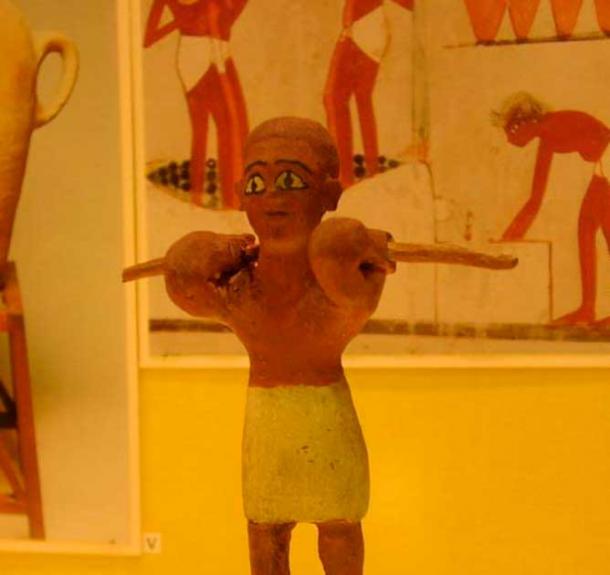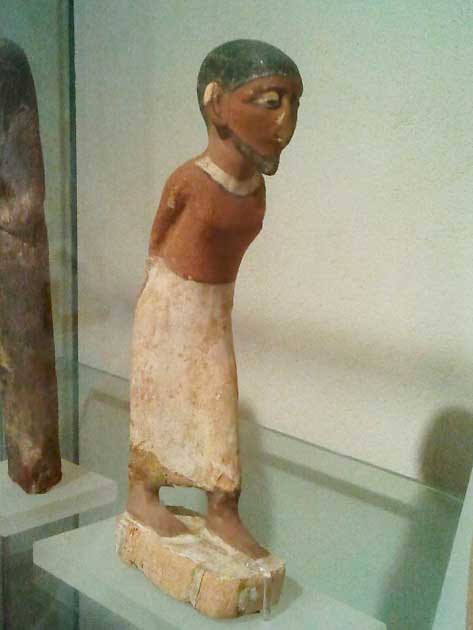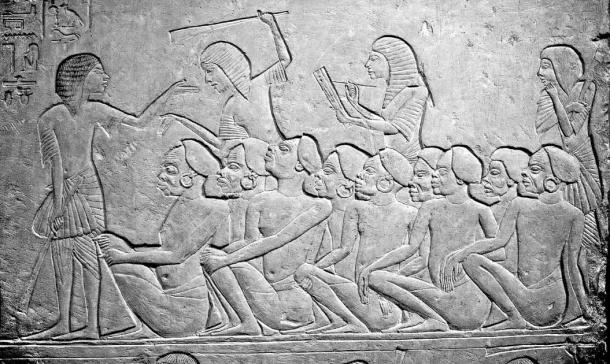
The First Recorded Incident of an Escaped Slave
Today, slavery is seen as one of the worst atrocities mankind has ever committed, but once slavery was seen as just another part of everyday life. The Hellenistic world of ancient Greece was no stranger to slavery. In fact, the number of slaves that lived during the period of Greek dominance was one of the highest in history. It was one of the primary features of life during this time. And, one of the first recorded examples of an escaped slave comes from Greek-ruled Egypt or the Ptolemaic period that lasted from 305 to 30 BC.
Slavery in Ptolemaic Egypt and Escaped Slave Dreams
The earliest record of a runaway slave comes from Ptolemaic Egypt in the second century BC. During this time, Egypt was under the rule of the Ptolemys. These were descendants of Ptolemy I, a former general of Alexander the Great. Egypt was a large part of the Hellenistic world during this period, however, unlike many of the lands conquered by Alexander, slavery actually decreased in Egypt after he conquered it. This was because slavery was actively discouraged by the new Greek rulers out of fear that the use of slaves would only compete with free labor and result in complete social upheaval. At the time many Egyptians worked not for money but simply so they would be allowed to remain as a tenant.
- Last of the Kings of Egypt: The Ptolemaic Dynasty
- Hellenistic Elite was Buried on a Bronze Bed with Gold in Her Mouth

This is a statuette of an Old Kingdom slave (in the Museum of Fine Arts, Budapest). (HoremWeb / CC BY-SA 4.0)
With that being said, the Greeks did bring with them a different form of slavery: the Greek form. As Greeks slowly entered Egypt, they brought their slaves with them. These slaves played a huge part in the daily lives of these Greeks, particularly in trade, handicrafts, and household services. Some slaves were also sent off for additional training through apprenticeships. These slaves would be given food and clothing for their work and occasionally sums of money to pay for living expenses while they learned.
While previously slaves were found in many different areas of Egypt such as quarries or on royal building projects, during the Hellenistic period slaves were only found in the households of Greeks living in Ptolemaic Egypt. The vast majority of these slaves weren’t Greek or Egyptian but from foreign lands under Hellenic rule.
During this period, only the Greeks could afford slaves because Egyptians actually had a very low social position under the rule of the Ptolemys. Even still, very few people had the wealth to be able to afford more than one or two slaves. It was really only rulers and the aristocracy who could afford to own other people. However, overall, the Greek rulers of Egypt enforced restrictions on the slave trade, so they probably had fewer slaves than the pharaohs who ruled before them.
- Did the Hyksos Pull Off a Peaceful Invasion of Egypt?
- Rare Hellenistic Cremation Burial Found in Turkey in 2,300-Year-Old Tomb

Figurine from Egypt of semitic slave. (Hanay / CC BY-SA 3.0)
The First Recorded Escaped Slave Had A Foreign Name
This first record of a runaway or escaped slave was written on a piece of papyrus found buried beneath the sands of Egypt. It tells the story of Hermon, also known as Nilus. Hermon was a Syrian born in Bambyce. Hermon belonged to Aristogenes, son of Chrysippus the Greek stoic philosopher. And when Hermon was 18 years old he ran away. The piece of papyrus documenting his escape is actually a call for his return and it reads:
“About 18 years old, of medium stature, beardless, with good legs, a dimple on the chin, a mole by the left side of the nose, a scar above the left corner of the mouth, tattooed on the right wrist with two barbarian letters. He has taken with him three golden coins, ten pearls, an iron ring on which an oil flask and strigils are represented, and is wearing a cloak and a loincloth. Whoever brings back this slave shall receive 3 weights of copper. If he points him out in a shrine, 2 weights of copper. If he points him out in the household of a substantial and actionable man, 5 weights of copper.” (As cited in Combing, 2014)
The weight of copper refers to talents. Therefore, the man who returns the slave will receive 3 copper talents in return. The shrine refers to the Mediterranean custom of slaves taking refuge in temple sanctuaries. The household of a substantial man refers to the fact that Hermon may have entered into another slave household as escaping from Egypt would have been next to impossible. Interestingly, Hermon escaped with a friend who seems to be of lesser importance, but who Aristogenes still wants returned:
“With him ran away Bion, a slave of Callicrates, one of the chief stewards at court, short of stature, broad at the shoulders, stout-legged, bright-eyed, who has gone off with an outer garment and a slave’s wrap and a woman’s dress worth 6 talents 5000 drachmae.” (As cited in Combing, 2014)

This ancient Egyptian stone wall panel, part of the collection of the Archaeological Museum, Bologna, depicts Nubian slaves for sale and being punished. (Mike Knell / CC BY-SA 2.0)
The Treatment and Punishment of Slaves
It is unknown if the two survived, but if they were caught, they likely faced harsh punishment, likely branding or limb amputation. It is also worth noting that the dress Bion escaped with is, quite tragically, worth more than the price Aristogenes is willing to pay for the return of Hermon.
It isn’t at all surprising that Hermon and Bion would make a run for it. After all, life as a slave in the Hellenistic world was a hellish experience. They were treated horrendously and were often whipped as punishment for their transgressions. Other punishments included branding, usually on the forehead for all to see.
The best chance a slave had at a decent life was either earning their freedom or escaping. Earning your freedom as a slave was almost impossible, relying on either the goodwill of your owner or your ability to somehow make enough money to buy your freedom. For this reason, Hermon and his friend Bion chose to run. Let’s just hope they made it.
Top image: Egyptian slaves and others in Egyptian dress. Source: Adobe Stock / Ruslan
By Mark Brophy
References
Cengage Learning. n.d. Runaway Slaves in Alexandria: Reward Offered! Available at: https://college.cengage.com/history/west/resources/students/primary/runawayslaves.htm
Combing, B. 2014. The Oldest Record of an Escaped Slave? Strange History. Available at: https://www.strangehistory.net/2014/11/25/oldest-record-escaped-slave/
Early Christian Writings. n.d. The Letter to Philemon. Available at: https://www.earlychristianwritings.com/goodspeed/ch09.html
Keenan, J. G, Manning, J. G. and Yiftach-Firanko. 2014. Law and Legal Practice in Egypt from Alexander to the Arab Conquest. Cambridge University Press
















Comments
Ending modern slavery by 2030 was adopted unanimously by members of the United Nations in 2015. Yet, five years later, almost one hundred UN member states still had no law against someone having a slave. There were literally tens of millions of slaves Worldwide in 2020. These include women and children for the sex trade and even children held as future organ donors.
One of the major human trafficking nations was Ukraine. But, Heck, a country with actual Nazi military battalions couldn't have slaves.
Could they? As for 2030, that's the deadline set for billions to be slaves and this is not unrelated to the previous paragraph.
Ending modern slavery by 2030 was adopted unanimously by members of the United Nations in 2015. Yet, five years later, almost one hundred UN member states still had no law against someone having a slave. There were literally tens of millions of slaves Worldwide in 2020. These include women and children for the sex trade and even children held as future organ donors.
One of the major human trafficking nations was Ukraine. But, Heck, a country with actual Nazi military battalions couldn't have slaves.
Could they? As for 2030, that's the deadline set for billions to be slaves and this is not unrelated to the previous paragraph.
Sounds more like a cherished sex slave. Or why would they not just replace him with somebody else? Just bear in mind, both Egypt and Athens had been morally compromised long before that. That said, the villagers would have basically become slaves the moment annual taxes were imposed (paid to the Romans or Persians – both knew the trick). Knife point if you said no. So, you were owned by the state at that ‘point’. You either gave them something, or you had to give them your labor.
Nobody gets paid to tell the truth.